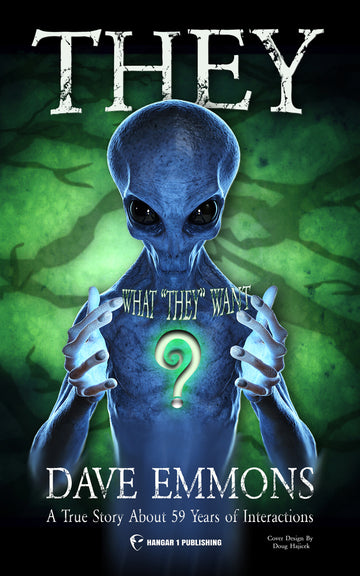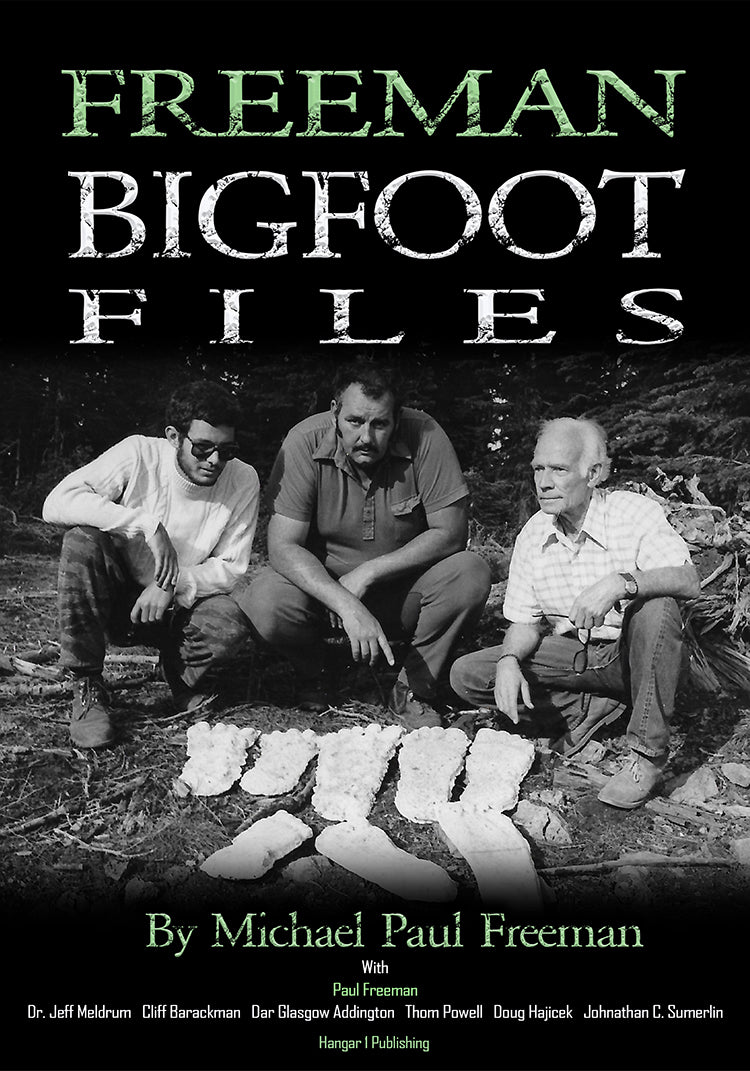Operation Paperclip Connections: Unmasking the Secret Ties

By Elaine Westfield, Ufologist
Introduction: The Faustian Bargain at the Dawn of the Cold War
Imagine standing amid the smoldering ruins of Nazi Germany in 1945. The most devastating war in human history has just ended, leaving 60 million dead and Europe in shambles. Yet scattered throughout these ruins lies an invisible treasure more valuable than gold: minds. The scientists and engineers who had propelled Hitler's war machine to terrifying technological heights were suddenly available – and both the Americans and Soviets wanted them desperately.
"Their Germans are better than our Germans." This joke, attributed to comedian Bob Hope after the 1957 Sputnik launch, captured a profound truth about America's post-war scientific advancement. Behind this quip lay one of the most morally complex operations in American intelligence history.
Operation Paperclip – named for the ordinary office supplies used to mark selected German scientists' files – wasn't merely a recruitment drive. It was a massive, clandestine program that brought over 1,600 German scientists, engineers, and technicians to American soil between 1945 and 1959. Many were former Nazi Party members. Some were SS officers. A few had stood trial at Nuremberg. At least one was convicted of mass murder and slavery.
What makes Paperclip so fascinating isn't just what happened but the sprawling web of connections it created – threads that run through government agencies, military branches, scientific institutions, Cold War politics, and the darkest corners of Nazi atrocities. These connections reveal a program far more complex and morally challenging than the sanitized "German rocket scientists helped America reach the moon" narrative that appears in many textbooks.
As the dust settled over Berlin in May 1945, American and Soviet intelligence officers weren't celebrating – they were racing against each other to secure the Reich's intellectual capital before it fell into enemy hands. The Cold War hadn't officially begun, but its opening salvos were already being fired in this frantic race for German brainpower.
Genesis of the Ties: Early Seeds of Exploitation
From Battlefield to Blueprint
In the final months of World War II, specially trained Allied teams fanned out across Germany with an unusual mission: not to kill, but to collect. They weren't after enemy soldiers but something potentially more valuable – documents, equipment, and most importantly, the brilliant minds behind Nazi Germany's most advanced weapons.
What they found stunned them. The Nazis, despite being on the losing side of the war, had maintained a technological edge that was frankly frightening. They had developed the world's first operational jet fighter (the Me-262), the first cruise missile (the V-1), the first ballistic missile (the V-2), and made breakthroughs in everything from synthetic fuels to nerve agents.
"The Germans were ahead of us in some instances from two to fifteen years," admitted U.S. Army Air Force Chief Henry "Hap" Arnold, "in the fields of rockets and guided missiles, jet engines, jet-propelled aircraft, synthetic fuels and supersonics."
This technological gap created an immediate sense of urgency. In a memo to his superior General Carl "Tooey" Spaatz, Major General Hugh Knerr expressed what many military leaders felt: "If we do not take the opportunity to seize the apparatus and the brains that developed it and put the combination back to work promptly, we will remain several years behind while we attempt to cover a field already exploited."
The Allied Powers had initially formed the Combined Intelligence Objectives Subcommittee (CIOS) to coordinate their hunt for German scientific secrets. But as battlefield victories mounted, this cooperation quickly devolved into competition, with American and British units racing each other – and the approaching Soviets – to secure valuable sites.
The Osenberg List: A Fortune Found in Filth
The story of Operation Paperclip contains many strange twists, but perhaps none more bizarre than how a toilet in Bonn University became a pivotal location in intelligence history.
In March 1945, a Polish laboratory technician at the university made an unexpected discovery while searching the facilities: several pieces of torn paper floating in an unflushed toilet. Rather than ignoring this unpleasant find, he fished them out. What he'd discovered was literally gold from garbage – fragments of what became known as the "Osenberg List."
Werner Osenberg, an engineer who headed the Nazi Reich Research Council's planning office, had compiled this list of approximately 15,000 scientists and engineers. As Germany's military situation deteriorated in 1943, these technical specialists had been recalled from combat units to apply their expertise to the Reich's increasingly desperate weapons programs.
The recovered list fragments made their way to British Intelligence, who passed them to Major Robert B. Staver, Chief of the Jet Propulsion Section of the U.S. Army Ordnance Corps. Staver immediately recognized its value. Here was a ready-made catalog of Germany's scientific elite – complete with locations, specialties, and contact information.
Staver used the list to create his own "Black List" of scientists to be prioritized for interrogation, with rocket scientist Wernher von Braun at the very top. This list became a founding document of what would eventually become Operation Paperclip. Through this unlikely toilet paper trail, a Nazi administrative document became the roadmap for American recruitment efforts.
Operation Overcast: The Pilot Program of Capture and Questioning
The original plan to bring German scientists to America was modest in scope and ambition. Initially unnamed, then designated "Operation Overcast," it began in July 1945 with a clear limitation: German specialists would be brought to the U.S. for six-month contracts, work under military supervision, and then return to Germany.
Lieutenant Colonel Harold R. Turner plainly stated the rationale: "We must support and actively engage in a program of research and development that will provide us with weapons of greater power and greater range than any other nation can produce."
On May 22, 1945, Major Staver sent a crucial cable to the Pentagon, urging swift action to evacuate German technicians and their families as "important for [the] Pacific war." This message, though seemingly straightforward, marked a significant pivot – from merely interrogating Germans to actively recruiting them.
The irony wasn't lost on anyone: just as denazification programs were removing Nazi party members from positions of authority throughout Germany, the U.S. was preparing to give some of those same individuals prestigious positions in America. But with the Japanese war still raging and Soviet intentions growing more concerning by the day, military necessity trumped moral qualms.
By January 1946, 160 German specialists had been brought to American soil under Operation Overcast. The war with Japan had ended, but the program accelerated anyway, driven by new Cold War imperatives.
Operation Lusty and Project Hermes: Intertwined Military Objectives
While rocket scientists received the most attention, Operation Paperclip was just one arm of a much broader effort to exploit German science and technology. On April 22, 1945, the U.S. Army Air Forces Intelligence Service launched Operation Lusty (Luftwaffe Secret Technology) specifically to secure aeronautical developments.
Colonel Donald L. Putt, who led Lusty, struck intelligence gold in April 1945 when American forces captured a large complex at Volkenrode in northern Germany. This facility, the Hermann Goering Aeronautical Research Institute, contained wind tunnels larger than anything in Britain or America. Most shocking: Allied intelligence had been completely unaware of its existence.
Inside, Putt discovered Dr. Adolph Busemann, the German inventor of the swept wing design that would revolutionize aviation. The information gathered from this facility alone would, according to Theodore von Karman (General Arnold's scientific advisor), "expedite United States development by approximately six to nine months."
Meanwhile, the U.S. Army Ordnance Department had already initiated Project Hermes in 1944, contracting with General Electric to develop surface-to-surface missiles. When Paperclip scientists arrived at White Sands Proving Ground in New Mexico, they were folded directly into this existing program, helping to test-fire the captured V-2 rockets that Major James Hamill had secreted out of Germany just hours before Soviet troops arrived.
The 86 aeronautical engineers brought to Wright Field in Ohio under Paperclip immediately went to work analyzing captured Luftwaffe aircraft, while at Fort Bliss, Texas, Von Braun and his team began designing what would eventually become the Redstone missile. These weren't isolated initiatives but interconnected parts of a vast technological transfer that would reshape America's military capabilities.
The U.S. Bureau of Mines even got into the act, employing seven German synthetic fuel scientists at a Fischer-Tropsch chemical plant in Missouri – showcasing how Paperclip's reach extended beyond traditional military applications into civilian industrial processes.
Forging the Core Connections: The Bureaucracy and the Bypass
The Joint Intelligence Objectives Agency (JIOA): The Engine of Operation Paperclip
By 1945, the U.S. military realized it needed a dedicated body to coordinate the rapidly expanding exploitation of German scientists. The Joint Intelligence Objectives Agency (JIOA) was created as a subcommittee of the Joint Chiefs of Staff specifically to manage what was becoming a massive undertaking.
The JIOA, often abbreviated as "JOAH" in verbal communications, became the bureaucratic engine driving Operation Paperclip. Its mandate was straightforward: identify high-value German scientific targets, evaluate their backgrounds, facilitate their transport to the U.S., and distribute them to various military and civilian programs where their expertise could be utilized.
Colonel Joel Holmes and Lieutenant Colonel Henry Whalen were key figures who expanded the JIOA's reach, transitioning it from a small operation focused on rocketry to a comprehensive effort spanning dozens of scientific disciplines. Under their guidance, what began as a list of a few hundred names grew into a program that would eventually bring more than 1,600 specialists to America.
The JIOA maintained dossiers on thousands of German scientists, engineers, and technicians, evaluating their technical value against the risk posed by their Nazi backgrounds. These files became the center of controversy when it later emerged that many had been sanitized to remove damaging information.
Shifting Goals: From Temporary Exploitation to Permanent Residency
What began as a short-term intelligence gathering operation underwent a profound transformation in March 1946. The original concept – bringing scientists to America for brief periods of questioning – evolved into something far more ambitious: a permanent transfer of German scientific capital to American soil.
On September 3, 1946, President Harry Truman approved a top-secret directive authorizing the expansion of what was now officially called "Operation Paperclip." The new scope was breathtaking: up to 1,000 German scientists could be brought to the United States with their families, offered long-term contracts, and eventually, a path to citizenship.
In a memo to Truman, Secretary of State Dean Acheson wrote: "I am presenting for your approval a statement of United States policy on the interim exploitation of selected German and Austrian specialists in the United States." The bland bureaucratic language concealed a dramatic shift in both scale and intent.
The decision to bring scientists' families was particularly significant. As one JIOA official noted, "We are no longer talking about temporary intelligence exploitation, but about permanently relocating Germany's scientific elite to America." Housing projects were established at places like Landshut, Germany, where scientists' families could live while awaiting transport to the U.S.
This expansion coincided with the War Department's recognition that the Soviet threat was eclipsing all other concerns. A Joint Intelligence Committee memorandum warned that without immediate action to stop the migration of German scientists to the Soviet zone, "the Soviet Union within a relatively short time may equal the United States developments in the fields of atomic research and guided missiles."
Circumventing the Rules: The Deliberate Whitewashing and Deception
President Truman's directive authorizing Operation Paperclip contained a crucial caveat: "No person found to have been a member of the Nazi Party and more than a nominal participant in its activities, or an active supporter of Nazism or militarism, shall be brought to the United States."
This restriction created an immediate problem. Many of the most valuable German scientists had been more than "nominal" Nazis. They had been party leaders, SS officers, or had directly contributed to war crimes. Adhering strictly to Truman's directive would have excluded most of the people the military wanted most.
The JIOA's solution was as simple as it was deceptive: they lied.
"The JIOA worked independently of the State Department, the president, and the White House," explains historian Annie Jacobsen. "And they did what they wanted to do anyway, which was to whitewash the Nazi records and bring these guys over here."
Documents declassified in the 1970s revealed the shocking extent of this deception. Security dossiers were systematically rewritten to remove damning information. Nazi Party membership was downplayed as "nominal." SS ranks disappeared from records. References to human experimentation and slave labor were excised.
In some cases, the transformation was laughable. An early draft of Wernher von Braun's report described him as "a security risk"; the final version praised his "great value to the war effort." Arthur Rudolph's file initially noted his enthusiasm for using concentration camp labor; the sanitized version described him as "not an ardent Nazi."
The JIOA created special procedures to bypass normal immigration checks. One particularly crafty method involved having scientists enter through the U.S. Consulate in Juarez, Mexico, avoiding scrutiny from regular immigration officials. Others were given military code names and false backgrounds, with paperwork carefully crafted to conceal their true histories.
Samuel Klaus, a State Department attorney assigned to represent his agency with the JIOA, became increasingly alarmed by these practices. He objected strenuously, pointing out that the U.S. was giving Nazis opportunities for American citizenship while denying that same chance to Holocaust refugees. His protests were ignored, and Klaus found himself increasingly marginalized.
Interagency Dynamics: A Web of Cooperation and Conflict
Behind the public face of Operation Paperclip lay a complex network of competing government agencies, each with its own agenda regarding German scientists. This created an intricate web of cooperation and conflict that shaped the program's evolution.
The CIA, still in its infancy, took a particularly aggressive approach. With a larger budget and fewer legal constraints than the military, the CIA actively recruited scientists the JIOA had rejected as too compromised. The Agency wasn't just interested in technical expertise – it wanted intelligence assets who could help spy on the Soviets.
This led to one of the most disturbing aspects of Paperclip: the CIA's recruitment of former Nazi intelligence officers. Reinhard Gehlen, Hitler's chief intelligence officer on the Eastern Front, received millions from the CIA to establish what became known as the "Gehlen Organization" – a network that helped smuggle over 5,000 Nazis away from facing trial.
The State Department remained the primary voice of caution and moral concern. When news of Paperclip began leaking to the press in late 1946, the department faced increasing public criticism. Eleanor Roosevelt and Albert Einstein publicly denounced the program, as did Jewish organizations and refugee groups. But military and intelligence agencies simply circumvented State Department objections by creating alternative pathways for entry.
Within the military itself, the Army, Navy, and Air Force competed for the most valuable German minds. The U.S. Army Signal Corps claimed 24 specialists for work on electronics and communications. The Air Force sent aeronautical engineers to Wright Field. The Navy pursued experts in submarine technology and underwater acoustics.
This interagency competition sometimes benefited the German scientists, who could leverage interest from multiple agencies to improve their conditions and salaries. The scientists quickly learned to navigate this complex bureaucracy, forming professional networks and advocating for better treatment.
The U.S. Bureau of Mines even got into the act, employing seven German synthetic fuel scientists at a Fischer-Tropsch chemical plant in Missouri – showcasing how Paperclip's reach extended beyond traditional military applications into civilian industrial processes.
Cold War Imperatives and Technological Ties
The Soviet Shadow: The Primary Driving Force
As 1945 turned to 1946, one factor eclipsed all others in driving Operation Paperclip forward: fear of the Soviet Union. What began as concern evolved into an obsession that overwhelmed moral qualms and legal constraints.
The moment that crystallized this shift came on October 22, 1946. At 4 a.m., battalions of Russian soldiers sealed off neighborhoods in East Berlin. Hundreds of arrest squads systematically raided apartments, smashing down doors and ordering German scientists and engineers into waiting trucks. Operation Osoaviakhim – the Soviet equivalent of Paperclip – had begun, and it was far more brutal and extensive than the American version.
In a single night, the Soviets forcibly relocated approximately 15,000 German specialists and their families to Russia. This mass kidnapping sent shockwaves through American intelligence circles. If there had been any remaining hesitation about the morality of Paperclip, it vanished overnight.
A Joint Intelligence Committee report spelled out the stakes in stark terms: "Unless the migration of important German scientists and technicians into the Soviet zone is immediately stopped, we believe that the Soviet Union within a relatively short time may equal the United States developments in the fields of atomic research and guided missiles."
The report estimated that German assistance had already cut "by several years" the time needed for the USSR to achieve practical results in nuclear weapons. The Cold War arms race was underway, and German expertise was a critical battlefield.
American officials increasingly framed Paperclip as defensive – both gaining expertise for ourselves and denying it to an adversary. As Colonel H.M. McCoy wrote to Air Force Intelligence: "The German personnel now engaged are a necessary, vital and irreplaceable factor in the Air Force research and development program."
This Cold War imperative reshaped the program in fundamental ways. Security concerns trumped proper vetting. Moral compromises became justified as national security necessities. The race against the Soviets created a willingness to overlook, even conceal, disturbing pasts in the name of technological advantage.
The Space Race Connection: Rocketry to the Moon
Of all the scientific fields impacted by Operation Paperclip, none is more famous – or more dramatically successful – than rocketry. The story of how Nazi missile engineers became American space heroes is the program's most visible legacy.
At the center stands Wernher von Braun, the charismatic genius behind the V-2 rocket. In May 1945, as Germany collapsed, von Braun orchestrated one of history's most audacious career moves. Recognizing that the Reich was finished but his expertise remained valuable, he led a group of 500 rocket specialists away from their experimental station to escape the approaching Soviets.
Knowing Americans would soon arrive, von Braun made preparations. He tasked engineers to hide critical V-2 technical documents in an abandoned mine, then sealed it with dynamite. When American forces finally approached, von Braun sent his younger brother Magnus down a hill on a bicycle to make first contact. "My name is Magnus von Braun," he announced to a startled American private. "My brother invented the V-2. We want to surrender."
On September 20, 1945, von Braun and seven key team members arrived at Fort Strong on Long Island in Boston Harbor. They were soon dispatched to Fort Bliss, Texas, where they would spend the next five years testing V-2 rockets at the nearby White Sands Proving Ground in New Mexico.
The first American V-2 launch occurred on April 16, 1946, followed by 67 more over the next six years. But von Braun had grander ambitions than merely replicating his Nazi-era work. He began publishing articles in popular magazines about space travel and served as technical advisor for a series of Disney television specials about space exploration.
In 1950, von Braun's team moved to the Redstone Arsenal in Huntsville, Alabama, where they developed the Redstone missile – America's first ballistic missile capable of carrying a nuclear warhead. This evolved into the Jupiter missile, and eventually the Saturn rockets that would send Apollo astronauts to the moon.
The launch of the Soviet satellite Sputnik in 1957 gave von Braun his moment. Suddenly, America was desperate to catch up in what became known as the Space Race. Von Braun, now director of NASA's Marshall Space Flight Center, delivered. He led the development of the Saturn V rocket, the massive vehicle that carried Neil Armstrong, Buzz Aldrin, and Michael Collins to the moon in July 1969.
The irony wasn't lost on anyone: the technology that had once rained destruction on London now carried humans to the lunar surface. Von Braun received the National Medal of Science in 1975, and two craters on the moon were named after Paperclip scientists – one for von Braun himself and another for Kurt Debus, a former V-weapons test director who became the first director of NASA's Kennedy Space Center.
Military-Industrial Complex Connections
While rocketry captures the most attention, Operation Paperclip's influence extended throughout America's burgeoning military-industrial complex, transforming multiple industries and technological fields.
At Wright Field (later Wright-Patterson Air Force Base) in Ohio, German aeronautical engineers revolutionized aircraft design. Their discovery that swept wings reduced air turbulence at high speeds transformed American aviation. The wind tunnels they designed and built – some parts of which are still in use today – gave American manufacturers testing capabilities decades ahead of their time.
Bell Aircraft Corporation became home to Walter Dornberger, the military commander of Nazi Germany's rocket program. Despite his role in using slave labor (which had been carefully erased from his dossier), Dornberger became Bell's chief guided missile specialist and eventually vice president for research. Under his guidance, Bell developed America's first surface-to-air nuclear missile and made crucial contributions to the space shuttle concept.
At Martin Aircraft, a team nicknamed "The Blue Angels" (for the blue paint in their facility) included Hans Multhopp, Peter Friedrich Jordan, and Julius Friedrich Vandrey – all Paperclip scientists who worked on the company's portion of the Dyna Soar space plane project. Their knowledge of aerodynamics and high-temperature materials proved invaluable for hypersonic vehicle design.
Boeing, Convair, Lockheed, and other major defense contractors all benefited from German expertise. Krafft Ehricke, who had worked with von Braun at Peenemünde, joined Convair and helped develop the Atlas ICBM and the pioneering Centaur upper-stage rocket.
The economic value of this technology transfer was staggering. The total worth of patents, industrial processes, and intellectual property brought to America through Paperclip has been estimated at over $10 billion (in mid-20th century dollars). This massive influx of knowledge helped fuel America's post-war economic and military boom.
Advancements Beyond Weaponry
While military applications dominated, Operation Paperclip scientists contributed to numerous civilian fields, creating technological advances that impact our daily lives in surprising ways.
In electronics, German specialists revolutionized miniaturization techniques, helping reduce component sizes and paving the way for modern computing. Hans Ziegler, brought to America through Paperclip, became a pioneer in telecommunications, helping develop satellite communication systems.
Materials science benefited enormously. German advances in ceramics, graphites, and synthetic materials found applications in everything from industrial processes to consumer goods. The Germans had mastered synthetic rubber production out of necessity during the war; this knowledge proved valuable as America's manufacturing economy expanded.
One particularly unexpected legacy: electromagnetic recording tape. German engineers had perfected this technology during the war, and their knowledge helped establish America's recording industry. Every time you stream music or watch a movie, you're benefiting from technology that came to America through Operation Paperclip.
Medical advancements flowed as well, though some came with troubling origins. German aerospace medicine, while partly based on horrific human experimentation, contributed to understanding how the human body responds to extreme conditions. This knowledge proved crucial for both military aviation and the space program.
Dr. Theodor W. Zobel, who developed the Schlieren-Interferometer optical device for measuring airflow, brought techniques that revolutionized American wind tunnel testing. Fritz Doblhoff's work on helicopters influenced rotorcraft development for decades.
Even seemingly mundane industrial processes showed German ingenuity. A 1946 New York Times article marveled at German advances that would benefit American industry: "Sterilize fruit juice without heat; run-proof hosiery; butter churned at 1,500 pounds per hour; yeast produced in unlimited quantities; wool pulled from sheepskins without injuring the animals' hides."
These varied contributions showcase how Paperclip's impact extended far beyond missiles and rockets, touching numerous aspects of post-war American technological development. The program represented perhaps the largest wholesale transfer of intellectual capital in modern history.
The Dark Underbelly: Connections to Atrocity
Complicity in War Crimes: From Nazi Service to American Employment
Behind the scientific achievements of Operation Paperclip lies a disturbing truth: many of these brilliant minds had knowingly contributed to the Nazi war machine and its atrocities. Their recruitment represented a willingness to overlook complicity in some of history's darkest crimes in exchange for technical expertise.
Contrary to post-war American propaganda that portrayed Paperclip recruits as apolitical scientists who had been forced to work for the regime, many were enthusiastic Nazis. Approximately half had been members of the Nazi Party or its affiliated organizations like the SS and SA. Some had joined before Hitler came to power, indicating early commitment to Nazi ideology.
Wernher von Braun himself held the rank of Sturmbannführer (Major) in the SS, an "honorary" title that nevertheless required him to swear a personal oath of loyalty to Adolf Hitler. He had been photographed in SS uniform with Heinrich Himmler, one of the principal architects of the Holocaust. After the war, von Braun claimed his Nazi affiliation was merely pragmatic, necessary to continue his research, but his rapid rise through both technical and party ranks suggests a more complex reality.
Walter Dornberger, who came to Bell Aircraft, had been a Major General in the Nazi military and worked closely with SS leadership. Kurt Blome had been Deputy Surgeon General of the Third Reich and a high-ranking Nazi official. Hubertus Strughold had conducted research for the Luftwaffe on high-altitude survival, using concentration camp prisoners as subjects.
The recruitment of these individuals required American officials to engage in moral and ethical contortions. The justification typically offered – that these men were simply scientists following orders – echoed the very defense rejected at the Nuremberg trials. As historian Annie Jacobsen notes, "The moral relativism embraced by Paperclip sponsors was exactly what the United States had gone to war against."
The scientists themselves often minimized their involvement, claiming they had focused solely on research and remained ignorant of the regime's crimes. Yet many had worked directly with Nazi leadership, received awards and honors from Hitler himself, and benefited personally from the regime's support.
This whitewashing of complicity created a disturbing paradox: while thousands of lower-level Nazi functionaries faced denazification proceedings, some of the regime's most valuable scientific assets received prestigious positions in America. It was a bargain that prioritized technical know-how over moral accountability.
Forced Labor and Concentration Camps: A Direct Link to Human Suffering
Perhaps the most damning connection between Paperclip scientists and Nazi atrocities involves the widespread use of slave labor from concentration camps. This wasn't a peripheral aspect of their work – it was central to how Germany's advanced weapons were produced.
The V-2 rocket program offers a particularly stark example. Missiles that would later be celebrated as precursors to the American space program were built in an underground factory called Mittelwerk, carved into the Harz Mountains near Nordhausen. The labor force consisted entirely of prisoners from the nearby Mittelbau-Dora concentration camp.
Working conditions were horrific. Prisoners labored 12-hour shifts in unventilated tunnels filled with rock dust, with no protection from toxic chemicals. Starvation rations, brutal beatings, and summary executions were common. Of the approximately 60,000 inmates who worked at Mittelwerk, an estimated 20,000 died – meaning the V-2 program killed more people through its production than through its deployment as a weapon.
Arthur Rudolph, who would later design NASA's Saturn V rocket, served as production director at Mittelwerk. Far from being an unwilling participant, documents show Rudolph was an enthusiastic proponent of using concentration camp labor. He personally visited the Buchenwald concentration camp to select prisoners and was known to have prisoners who didn't meet production quotas hanged within view of the assembly line.
Wernher von Braun regularly visited the Mittelwerk facility and could not have been unaware of conditions there. In a 1969 deposition given to the West German government, he acknowledged seeing mistreated prisoners but claimed he felt powerless to intervene. Yet he never attempted to distance himself from the program or reject the benefits it provided to his research.
When confronted years later about their knowledge of these conditions, many Paperclip scientists offered variations on the same defense: they were focused on their technical work and had no influence over labor conditions. This rationalization allowed them to mentally separate their scientific achievements from the human cost of those achievements – a separation American officials found conveniently acceptable.
Some eventually faced consequences for their involvement. In 1984, Arthur Rudolph, facing denaturalization proceedings based on his Mittelwerk activities, renounced his U.S. citizenship and returned to Germany. But most lived out their lives in America, their connections to concentration camps carefully omitted from their public biographies.
Human Experimentation and Biological/Chemical Warfare
Among the darkest chapters in the Paperclip story is the recruitment of scientists involved in horrific human experimentation and the development of biological and chemical weapons. Their work under the Nazi regime crossed every ethical boundary, yet their expertise was deemed valuable enough to overlook these atrocities.
Kurt Blome served as the Deputy Surgeon General of the Third Reich and headed its biological warfare program. Under his direction, prisoners at Ravensbruck and other concentration camps were deliberately infected with deadly diseases like plague and typhus to study their effects. Blome also conducted experiments on inducing cancer in healthy individuals through viruses. Despite this history, U.S. officials from Camp Detrick (now Fort Detrick, Maryland) interviewed Blome and recruited him to work on classified programs related to germ warfare.
Walter Schreiber, the former Surgeon General of the Third Reich, had overseen medical experiments involving freezing, high-altitude decompression, and infectious diseases – procedures that often resulted in the subjects' deaths. When his background was exposed in 1951 by the Boston Globe, the ensuing public outrage forced officials to address his case. Rather than prosecute him, however, the U.S. military helped Schreiber emigrate to Argentina to avoid further scrutiny.
Hubertus Strughold, dubbed the "father of space medicine," had conducted experiments on concentration camp prisoners to determine human tolerance for extreme conditions. These included simulating high-altitude conditions without oxygen, resulting in painful deaths. Nonetheless, Strughold became a leading figure in aerospace medicine and was honored for decades before investigations in the 1980s revealed the extent of his involvement in Nazi human experiments.
Perhaps most disturbing is the possibility that knowledge gained through these unethical experiments contributed to American chemical and biological weapons programs. The Army Chemical Corps, which recruited many German specialists, went on to develop nerve agents like sarin and chemical defoliants like Agent Orange. While direct connections are difficult to establish due to still-classified information, documents suggest that German expertise accelerated these programs by years.
Some evidence suggests these connections extended to controversial mind control research. Scientists who had studied the effects of drugs and psychology under the Nazis reportedly contributed to the CIA's MKUltra program, which explored using LSD and other substances for interrogation and behavior modification.
The legacy of this dark aspect of Paperclip persisted for decades. Only in 2013, after a Wall Street Journal exposé detailed Strughold's connection to human experimentation, did the Space Medicine Association finally retire an award named in his honor. This belated reckoning came nearly 30 years after his death.
Nuremberg Trials and Evaded Justice
The Nuremberg Trials were established to hold Nazi leadership accountable for war crimes and crimes against humanity. Yet Operation Paperclip effectively created a side door through which some who should have faced justice instead found comfortable lives in America. This systematic evasion of accountability represents one of the program's most troubling aspects.
Otto Ambros provides a particularly striking example. A chemist and director of IG Farben, the chemical conglomerate that produced Zyklon B for the gas chambers, Ambros was tried at Nuremberg and convicted of mass murder and slavery. He received an eight-year sentence – lenient given his crimes. Yet after serving just three years, he was hired as a consultant for the U.S. Department of Energy and several American chemical firms, including W.R. Grace and Dow Chemical.
Georg Rickhey, an engineer who managed the Mittelwerk V-2 factory using slave labor, was actually brought to the United States first, then returned to Germany to stand trial when his background became impossible to ignore. Despite substantial evidence of his involvement in the brutal treatment of prisoners, he was acquitted – one of only four defendants out of nineteen to receive this verdict. Though he never returned to the U.S., his case illustrates how the justice system sometimes bent to accommodate valuable scientists.
In a particularly egregious case, Drew Pearson wrote an article for The New York Times in March 1947 alleging that Carl Krauch, an IG Farben executive awaiting trial at Nuremberg, had been offered a Paperclip contract while still in custody. This explosive claim proved deeply embarrassing to program administrators and highlighted the tension between justice and expediency.
Many other Paperclip recruits simply avoided trials altogether, their cases quietly shelved as they began new lives in America. Government agencies actively worked to prevent investigations that might expose these individuals' pasts or necessitate their deportation.
The moral cost of this approach was felt most acutely by Holocaust survivors and the families of Nazi victims. While those who had suffered under the regime struggled to rebuild shattered lives, some who had contributed to their suffering were enjoying prestigious positions and comfortable salaries in America. This bitter irony wasn't lost on Jewish organizations and refugee advocates, who repeatedly protested what they saw as a betrayal of justice.
Samuel Klaus, the State Department attorney who had opposed Paperclip from the beginning, summed up the fundamental disconnect: "We fought a war against these people, and now we're hiring them."
Concealment, Controversy, and the Long Shadow
The Secret Program: Keeping Ties Hidden
From its inception, secrecy was essential to Operation Paperclip's success. Officials recognized that the American public, having just sacrificed so much to defeat Nazism, would likely be outraged to learn their government was welcoming former Nazi scientists with open arms.
The program's very name reflected this clandestine nature. "Paperclip" referred to the actual paper clips attached to the files of scientists whose backgrounds were potentially too damning for them to be approved through normal channels. These physical markers identified cases requiring special handling – essentially, individuals whose Nazi connections needed to be concealed.
Security classifications wrapped the program in layers of protection. Documents were marked "Top Secret," access was strictly limited, and communications about the scientists often used code names or military pseudonyms rather than their actual German names. When scientists first arrived in America, they were housed on military bases where their movements could be controlled and contact with the public limited.
The military went to extraordinary lengths to manage the scientists' public image. When reporters were allowed contact with Paperclip specialists, these interactions were carefully staged. Scientists were coached on what to say and what to avoid mentioning. Their Nazi ties were downplayed or omitted entirely, and they were presented as apolitical technicians who had never been true believers in Hitler's regime.
This secrecy extended to the scientists' families as well. Spouses and children were instructed not to discuss their backgrounds or their husbands' and fathers' wartime activities. Many families lived in closed communities at places like Fort Bliss, Texas, where they had limited interaction with the broader American society.
Despite these precautions, information about Paperclip began leaking to the press as early as December 1946. Publications like The New York Times and Newsweek ran articles revealing that German scientists – some with Nazi connections – were being brought to America. The War Department responded with its own favorable propaganda, featuring interviews with handpicked scientists doing seemingly innocent work.
Over time, the program became something of an open secret – widely known but rarely discussed in detail. Bob Hope's joke about "their Germans" versus "our Germans" after the Sputnik launch in 1957 indicates how the basic fact of German scientists working in America had entered popular consciousness, even if the full extent of their Nazi connections remained obscured.
Public and Internal Opposition: Early Critics and Moral Outrage
Despite government efforts to control the narrative, Operation Paperclip faced significant opposition from the beginning, both from the public and from within the government itself.
On December 6, 1946, the Council Against Intolerance in America sent a forceful telegram to President Truman expressing "profound concern" about the program. "We hold these individuals to be potentially dangerous carriers of racial and religious hatred," they wrote. "Their former eminence as Nazi Party members and supporters raises the issue of their fitness to become American citizens." The telegram was signed by approximately forty prominent Americans, including Albert Einstein.
Einstein and Eleanor Roosevelt emerged as particularly vocal critics, using their considerable public influence to question the morality of recruiting former Nazis. Roosevelt, whose humanitarian work with refugees gave her unique moral authority, found the program especially troubling given America's simultaneous refusal to accept many Jewish refugees fleeing Europe.
Organizations including the NAACP, the Society for the Prevention of World War Three, and the Federation of American Scientists issued statements condemning Paperclip. The latter called it "an affront to the people of all countries who so recently fought beside us, to the refugees whose lives were shattered by Nazism, to our unfortunate scientific colleagues of former occupied lands, and to all of those others who suffered under the yoke these men helped to forge."
Even more telling was the opposition from within government ranks. Samuel Klaus of the State Department consistently argued against recruiting scientists with Nazi backgrounds, pointing out the contradiction between American ideals and the pragmatic compromises being made. His stance eventually earned him enemies within the military and intelligence communities, and during the Red Scare, he found himself targeted for his opposition.
Jewish-American organizations were particularly outspoken. They highlighted the bitter irony that former Nazis were being welcomed to America while Holocaust survivors remained in displaced persons camps across Europe, unable to secure U.S. visas due to strict immigration quotas.
Public controversy reached a peak in 1951 when the Boston Globe exposed Walter Schreiber's Nazi past and his connection to human experimentation. The resulting outcry forced his relocation to Argentina, demonstrating that when fully informed, the American public was not prepared to accept war criminals regardless of their scientific value.
These various forms of resistance reveal an important truth: Operation Paperclip was never an uncontroversial program that simply reflected the consensus of its time. From its earliest days, many Americans recognized and voiced the profound moral problems inherent in recruiting scientists who had served the Nazi regime.
The "Safe Haven" Report: Official Acknowledgment of Complicity
For decades, the full extent of American complicity in sheltering Nazi scientists and officials remained hidden in classified files. Then, in 2010, a bombshell report emerged that confirmed what critics had long suspected: the United States had knowingly created a "safe haven" for Nazis and their collaborators after World War II.
This 600-page report, titled "Striving for Accountability in the Aftermath of the Holocaust," was produced by the Department of Justice's Office of Special Investigations. It had been completed in 2006 but kept secret for four years until The New York Times obtained a full, unredacted copy after the Justice Department released a heavily censored version in response to a Freedom of Information Act request.
The report's conclusions were damning. It stated explicitly that "America, which prided itself on being a safe haven for the persecuted, became – in some small measure – a safe haven for persecutors as well." It documented that U.S. intelligence officials had "created a 'safe haven' in the United States for Nazis and their collaborators after World War II" and detailed "decades of clashes, often hidden, with other nations over war criminals here and abroad."
The report revealed that in many cases, scientists and other Nazi collaborators had been "knowingly granted entry" to the United States, even when government officials were fully aware of their pasts. It described how intelligence agencies, particularly the CIA, had obstructed Justice Department efforts to investigate and prosecute suspected Nazi war criminals living in America.
One case highlighted in the report involved Otto Von Bolschwing, an associate of Adolf Eichmann who had helped develop initial plans "to purge Germany of the Jews." The report documented internal CIA memos from 1954 debating what to do if Von Bolschwing's Nazi background became public – whether to deny it outright or "explain it away on the basis of extenuating circumstances."
The Justice Department had tried to keep this report secret, even fighting a lawsuit to prevent its release. When a heavily redacted version was finally provided, more than 1,000 passages and references had been deleted based on exemptions for privacy and internal deliberations. The fact that former officials felt compelled to leak the complete document to The New York Times reveals how significant they considered its findings.
This report represented an official, if belated, acknowledgment of the moral compromise at the heart of Operation Paperclip. Coming from within the government itself, it confirmed what critics had argued for decades: that in the pursuit of scientific and intelligence advantages, the United States had willingly sheltered individuals who should have faced justice for their actions during the Holocaust.
Unmasking the Past: Declassification and Delayed Reckoning
The full story of Operation Paperclip remained hidden for decades, buried under classification stamps and bureaucratic secrecy. Beginning in the 1970s, however, a series of declassifications, investigations, and journalistic exposés began to reveal the program's darker dimensions, leading to a delayed but significant reckoning.
In 1974, an investigation of CIA abuses led to the first major revelations about Operation Paperclip. These disclosures prompted investigative journalist Tom Bower to research and publish "The Paperclip Conspiracy" in 1987, one of the first comprehensive accounts of the program. But Bower had limited access to classified materials, and his work, while groundbreaking, could only tell part of the story.
A more significant breakthrough came in 1985 when journalist Linda Hunt published an article titled "U.S. Cover-Up of Nazi Scientists" in the Bulletin of the Atomic Scientists. Based on newly declassified documents, Hunt revealed how military officials had systematically concealed information about German specialists to secure their immigration status. This article, later expanded into a book, provided the first documentary evidence of the deliberate sanitization of Nazi backgrounds.
The most substantial shift in public access came in 1998 when President Bill Clinton signed the Nazi War Crimes Disclosure Act. This legislation mandated the declassification of approximately 8.5 million pages of records related to Nazi war criminals and their treatment by U.S. authorities. This unprecedented release of information formed the basis for the 2004 scholarly study "U.S. Intelligence and the Nazis," which offered a more complete picture than had ever been possible.
These revelations led to concrete actions against some Paperclip scientists who had hidden their pasts. In the early 1980s, Eli Rosenbaum, a Harvard Law student who later joined the Justice Department's Office of Special Investigations, connected the Saturn V rocket designer Arthur Rudolph to slave labor at the Mittelbau-Dora concentration camp. The resulting investigation led Rudolph to renounce his U.S. citizenship in 1984 rather than face trial.
Institutions also began to confront their connections to former Nazis. In 2013, the Space Medicine Association finally retired an award named for Hubertus Strughold after detailed evidence of his involvement in human experimentation came to light. NASA itself has engaged in a complex process of acknowledging von Braun's Nazi past while celebrating his contributions to the space program.
This gradual unmasking continues today. Recent books like Annie Jacobsen's "Operation Paperclip" (2014) have incorporated newly available documents and interviews with family members of Paperclip scientists to provide the most comprehensive accounts yet. These works reveal not just what happened but how thoroughly American authorities worked to conceal these scientists' pasts – not only from the public but often from themselves.
The delayed reckoning with Operation Paperclip mirrors America's broader struggle to confront morally ambiguous aspects of its Cold War conduct. As more documents become available and more scholars examine this history, our understanding continues to evolve, forcing us to grapple with uncomfortable questions about the price of scientific advancement and national security.
Speculative Connections: Blue Light and Behavioral Influence
Among the more speculative but fascinating possible legacies of Operation Paperclip is a theoretical connection between early neuroscience research involving former Nazi scientists and modern technologies that might influence human behavior, particularly through blue light emissions from electronic screens.
This theory begins with documented facts: some German scientists recruited under Paperclip had expertise in neurological research and psychology. The CIA and other agencies were deeply interested in potential applications for behavioral modification and control, eventually leading to programs like MKUltra, which explored the use of drugs and other techniques for mind control.
Dr. José Delgado, though not a German scientist, conducted influential research during this era involving implanting electrodes into animals' brains, particularly the thalamus, to control their behavior wirelessly using electromagnetic signals. In one famous demonstration, Delgado used a remote device to stop a charging bull. While not directly part of Paperclip, Delgado's work occurred in the same time period and intellectual environment where former Nazi scientists were contributing to American research.
From these established facts, some theorists have proposed a more speculative connection: that research into electromagnetic influence on behavior might have influenced the later development of screen technologies, particularly the use of blue light in electronic displays. Blue light is known to affect circadian rhythms by suppressing melatonin production, potentially disrupting sleep patterns and influencing mood and cognitive function.
According to this theory, the progression from direct neural stimulation (as in Delgado's work) to more subtle forms of influence through electromagnetic radiation (including light) represents a natural evolution of behavior modification research. The widespread adoption of blue-light-emitting screens could thus be seen as an extension of earlier attempts to influence human behavior through technological means.
It's important to emphasize that this connection remains highly speculative and unproven. There is no direct evidence linking Operation Paperclip scientists to the development of blue light technology with the specific intent of behavioral control. The documented physiological effects of blue light on circadian rhythms are real, but attributing intentional behavior modification motives to screen design goes far beyond available evidence.
Nevertheless, this theory highlights how the shadows of Operation Paperclip extend into unexpected areas of modern life, prompting questions about the origins and impacts of technologies we use daily. It also illustrates how the program's secretive nature and moral ambiguities have made it fertile ground for broader speculation about hidden influences in contemporary society.
The Complex Legacy of Operation Paperclip Connections
A Double-Edged Sword: Scientific Progress vs. Moral Cost
Operation Paperclip's legacy cannot be reduced to simple judgments. It represents one of history's most stark examples of a Faustian bargain – extraordinary scientific advancement purchased at the cost of moral compromise.
The tangible benefits are undeniable. German scientists accelerated American rocketry programs by an estimated 10-15 years. Their contributions to missile technology bolstered national defense during the tense early Cold War. The Saturn V rocket – largely based on principles developed by von Braun's team in Germany – stands as one of humanity's greatest engineering achievements, enabling the moon landings that inspired a generation.
Beyond rocketry, Paperclip scientists advanced jet aircraft design, improved wind tunnel testing, developed crucial medical treatments, and pioneered materials that found applications throughout American industry. Their collective impact on American technological development would be difficult to overstate.
Yet these achievements came at a profound moral cost. By recruiting scientists with Nazi ties, the United States tacitly accepted their complicity in a genocidal regime. The systematic whitewashing of these scientists' backgrounds undermined principles of accountability and justice. Holocaust survivors watched as some who had contributed to their suffering received prestigious positions in America while they struggled to rebuild shattered lives.
Perhaps most troubling was the precedent set: when national security interests clash with ethical considerations, ethics can be compromised. This pattern would reappear throughout the Cold War in various contexts, from supporting authoritarian regimes to conducting questionable experiments on unwitting subjects.
The scientists themselves embodied this duality. Wernher von Braun genuinely believed in humanity's destiny among the stars, yet had willingly used slave labor to build weapons of terror. Kurt Blome may have contributed valuable insights to biological defense, but had conducted horrific experiments on concentration camp prisoners. Each case presents an uncomfortable question: can great achievements redeem terrible actions?
As historian Michael Neufeld has observed, "Operation Paperclip is a reminder that things Americans celebrate, like the moon landing, can have morally ambiguous origins." This ambiguity makes Paperclip not just a historical footnote but a case study in the complex ethical questions that arise when national interests, scientific progress, and moral principles collide.
The Enduring Debate: Understanding the Past, Reflecting on the Present
More than 75 years after its inception, Operation Paperclip remains a subject of intense historical study and ethical debate. Understanding this program – its motivations, its mechanisms, and its moral compromises – provides crucial insights into how nations navigate competing interests in times of international tension.
The program's web of connections helps explain its enduring fascination. It links the horrors of Nazi Germany to the triumphs of the American space program, the pragmatism of Cold War intelligence to the lofty ideals of justice and accountability. It reminds us that history rarely unfolds in morally tidy packages but rather through complex interactions between competing values and interests.
Perhaps most importantly, Paperclip raises questions that remain relevant today. When national security appears threatened, what moral compromises are acceptable? How do we balance the pursuit of technological advantage against principles of justice? What responsibility do scientists bear for the applications and origins of their work?
Recent conflicts have raised similar dilemmas. After the 9/11 attacks, American intelligence agencies again faced questions about cooperating with individuals connected to human rights abuses in the name of security. The globalized hunt for scientific talent today raises issues about the backgrounds and affiliations of researchers in sensitive fields. The tension between pragmatic national interests and ethical principles remains as challenging as ever.
The gradual declassification of Paperclip records and continued historical research have allowed for a more complete understanding of this complex program. This ongoing process of revelation and reckoning demonstrates how societies can eventually confront uncomfortable aspects of their past, even those initially hidden under layers of secrecy and justification.
Operation Paperclip's legacy thus extends beyond specific technological achievements or ethical compromises. It serves as a powerful case study in how nations balance competing values during times of perceived existential threat. By examining its web of connections – to Nazi atrocities, to Cold War imperatives, to scientific advances, to moral principles – we gain insight not just into a specific historical program but into the enduring tensions that shape national decision-making in times of crisis.
The scientists who came to America through this program have largely passed away, but the questions their recruitment raised remain as vital as ever. In wrestling with Paperclip's complex legacy, we better prepare ourselves to navigate similar challenges in our own time, when scientific advancement, national security, and moral principles continue to exist in uneasy balance.
From Bigfoot to UFOs: Hangar 1 Publishing Has You Covered!
Explore Untold Stories: Venture into the world of UFOs, cryptids, Bigfoot, and beyond. Every story is a journey into the extraordinary.
Immersive Book Technology: Experience real videos, sights, and sounds within our books. Its not just reading; its an adventure.


























